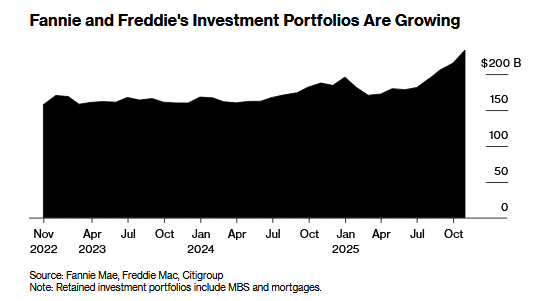 For most economists and politicians, the role of central bank authorities is to make the economy as stable as possible. What do they mean by economic stability? Economic stability refers to an absence of excessive fluctuation, so an economy with constant output growth and low and stable price inflation is likely to be regarded as stable.
For most economists and politicians, the role of central bank authorities is to make the economy as stable as possible. What do they mean by economic stability? Economic stability refers to an absence of excessive fluctuation, so an economy with constant output growth and low and stable price inflation is likely to be regarded as stable.
An economy with frequent boom-bust cycles and variable price inflation would be considered unstable. According to popular thinking, a stable economic environment in terms of stable price inflation and stable output growth acts as a buffer against various shocks. This makes it much easier for businesses to plan. In this way of thinking in particular, price level stability is the key for economic stability.
For instance, a relative strengthening in people’s demand for potatoes versus tomatoes may take place. This relative strengthening is going to be depicted by the relative increase in the prices of potatoes versus tomatoes. Now to be successful businesses must pay attention to consumers’ wishes as manifested by changes in the relative prices of goods and services.
Failing to abide by consumers’ wishes will lead to the wrong production mix of goods and services and will lead to losses. Hence, in our case, by paying attention to relative changes in prices businesses are likely to increase the production of potatoes versus tomatoes. If the price level is not stable, then the visibility of the relative price changes becomes blurred and, consequently, businesses cannot ascertain the relative changes in the demand for goods and services and make correct production decisions.
This leads to a misallocation of resources and to the weakening of economic fundamentals. Unstable changes in the price level obscure changes in the relative prices of goods and services.
Consequently, businesses will find it difficult to recognize a change in relative prices when the price level is unstable. Based upon this way of thinking, it is not surprising that the mandate of the central bank is to pursue policies that will bring a stable price level.
Using various quantitative methods, the Fed’s economists have established that they must aim at keeping price inflation at 2 percent. Any significant deviation from this figure constitutes deviation from the growth path of price stability, which is an admission that Fed policy makers believe they have to stabilize the price level in order to allow the efficient functioning of the market economy.
Obviously, this is a contradiction in terms, since any attempt to manipulate the so-called price level implies interference with markets and hence leads to false signals as conveyed by changes in relative prices. By means of setting targets to interest rates and by means of monetary pumping it is not possible to strengthen economic fundamentals, but on the contrary, it only makes things much worse. Here is why.
A Policy of Price Stability Leads to More Instability
Assume that the so-called price level begins to show a decline in growth momentum. To prevent this decline, the Fed aggressively pushes money into the banking system. Because of this policy, following a time lag, the price level stabilizes. Should we regard this as a successful monetary policy action?
Given that monetary pumping sets in motion the diversion of wealth from wealth generating activities to non-wealth-generating activities, this leads to the weakening of the wealth generation process and to economic impoverishment. Note that the economic impoverishment has taken place despite price level stability. In order to achieve price stability, the Fed had to allow an increase in the growth momentum of the money supply. The fluctuations in the growth momentum of money supply matter here, because they set in motion the menace of the boom-and-bust cycle regardless of whether or not the price level is stable.
While increases in money supply are likely revealed in general price increases, this need not always be the case. Prices are determined by real and monetary factors. Consequently, if the real factors are pulling things in an opposite direction to monetary factors, no visible change in prices might take place. Even if money growth is high, consumer prices might display only moderate increases. Clearly, if we were to pay attention to the so-called price level and disregard increases in the money supply, we would reach misleading conclusions regarding the state of the economy.
On this, Murray N. Rothbard wrote:
The fact that general prices were more or less stable during the 1920s told most economists that there was no inflationary threat, and therefore the events of the great depression caught them completely unaware.
The Assumed Neutrality of Money Is at the Root of Price Stabilization Policies
The view that money is neutral is at the root of price stabilization policies. Changes in money only affect the price level while having no effect upon the real economy. This way of thinking holds that changes in money supply do not affect the relative prices of goods and services.
For example, if one apple exchanges for two potatoes, then the price of an apple is two potatoes, or the price of one potato is half an apple. If one apple exchanges for one dollar, then it follows that the price of a potato is fifty cents. Note that the introduction of money does not alter the fact that the relative price of potatoes versus apples is two to one. Thus, a seller of an apple will receive one dollar, which then enables him to purchase two potatoes.
In this way of thinking, an increase in the quantity of money leads to a proportionate fall in its purchasing power, or a proportionate rise in the price level, while a fall in the quantity of money results in a proportionate increase in the purchasing power of money, or a proportionate decline in the price level. That is, one apple is exchanged for two potatoes, all other things being equal.
Let us assume that the amount of money has doubled and as a result, with the purchasing power of money being halved, doubling the price level. This means that now one apple can be exchanged for $2 while one potato for $1. Note that despite the doubling in prices a seller of an apple with the obtained $2 can still purchase two potatoes. We have here a total separation between changes in the relative prices of goods (how many apples exchanged per potatoes) and the changes in the price level.
Therefore, it would appear that the only problem with inflation is that it obscures the visibility in the movements of the relative prices of goods thereby causing a misallocation of resources. Other than that, inflation is harmless. What is the problem with this way of thinking?
Following the Cantillon effect, when new money is injected there always are first recipients of the new money that benefit. The first recipients with more money at their disposal can now acquire a greater amount of goods while the prices of these goods are still unchanged. As money, starts to move through the economy, prices of goods begin to rise.
Consequently, the late receivers of new money benefit less or may even find that most prices have risen so much that they now can afford fewer goods. Increases in the money supply lead to a redistribution of wealth from later recipients—or nonrecipients—of new money to the earlier recipients.
We suggest that this shift in wealth alters individual demands for goods and services and, in turn, will alter the relative prices of goods and services. Changes in money supply sets in motion new dynamics that give rise to changes in demands for goods and to changes in their relative prices. Hence, changes in money supply cannot be neutral as far as relative prices of goods are concerned.
Price Level Cannot Be Ascertained Conceptually
It is not possible to establish the total purchasing power of money and hence the price level. When one dollar is exchanged for one loaf of bread, we can say that the purchasing power of one dollar is one loaf of bread. If one dollar is exchanged for two tomatoes then this also means that the purchasing power of one dollar is two tomatoes. The information regarding the specific purchasing power of money does not however allow the establishment of the total purchasing power of money. It is not possible to ascertain the total purchasing power of money because we cannot add up two tomatoes to the one loaf of bread. We can only establish the purchasing power of money with respect to a particular good in a transaction at a given point in time and at a given place.
On this Rothbard wrote:
Since the general exchange value, or PPM (purchasing power of money), of money cannot be quantitatively defined and isolated in any historical situation, and its changes cannot be defined or measured, it is obvious that it cannot be kept stable. If we do not know what something is, we cannot very well act to keep it constant.
Now, the Fed’s monetary policy that aims at stabilizing the price level by implication affects the growth rate of money supply. Since changes in money supply are not neutral, this means that a central bank policy amounts to the tampering with relative prices, which leads to the disruption of the efficient allocation of resources.
As a result, a policy of stabilizing prices leads to the overproduction of some goods and the underproduction of some other goods. This is not what the stabilizers are telling us, however. Instead, they believe that the greatest merit of stabilizing changes in the price level is that it allows free and transparent fluctuations in the relative prices, which in turn leads to the efficient allocation of scarce resources.
Economic Stability Has Nothing to Do with Stabilizing the Economy
What matters for economic prosperity is not price stability but rather allowing free relative price fluctuations. Free fluctuations in relative prices only can take place in an environment free of government and central bank tampering with the economy. This, in turn, allows businesses to abide by the wishes of consumers, which permits an efficient allocation of scarce resources.
We believe central authorities do not tamper with markets, fluctuations in prices will mirror changes in the relative supply-demand conditions. Note that the Soviet Union after 1947 established a stable price framework based on fixed prices. While this prevented price inflation, it created persistent shortages of food and consumer goods. By not allowing the free movement of prices this resulted in a drastic decline in individual living standards.
Summary and Conclusion
Most economists believe that the key to healthy economic fundamentals is price stability. A stable price level, it is held, leads to the efficient use of the economy’s scarce resources and hence results in better economic fundamentals. It is not surprising, then, that the mandate of the Federal Reserve is to pursue policies that generate price stability.
By employing monetary policies that aim at stabilizing the price level, the Fed actually undermines the market economy. Although the former Soviet Union had low inflation in terms of prices of goods because the price mechanism was kept stable by government decree, the side effects of this policy included persistent shortages and low living standards. Thus, it appears that the ever-growing interference of the government and the central bank with the workings of markets drives the US economy toward persistent economic impoverishment and drastically lower living standards over time.
Full story here Are you the author? Previous post See more for Next postTags: Featured,newsletter




























